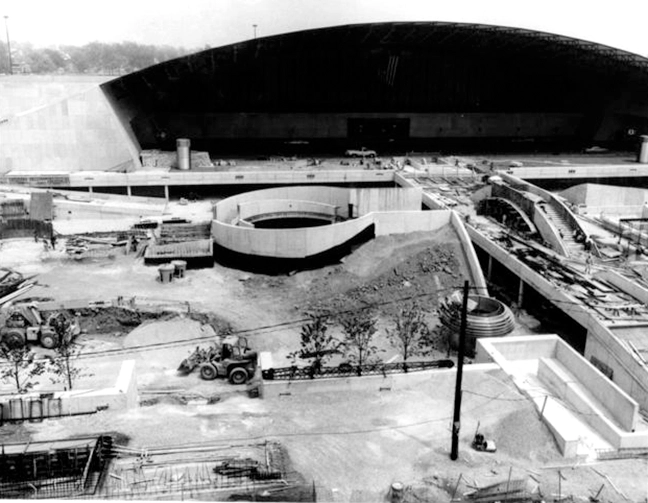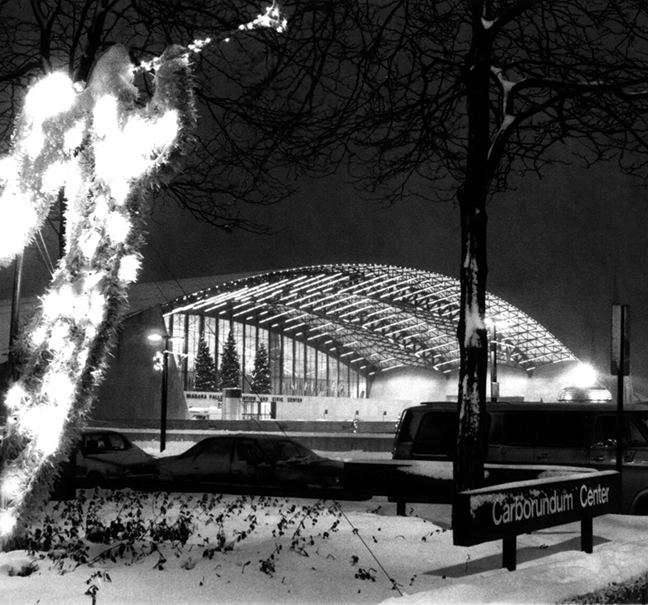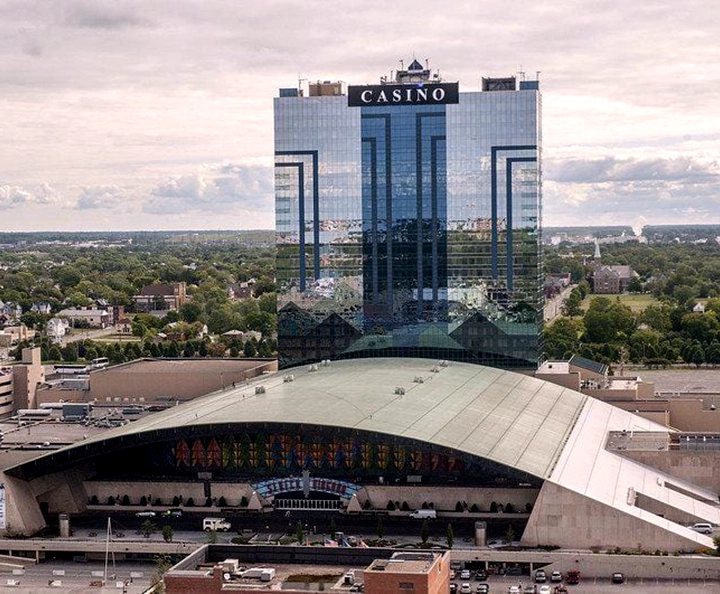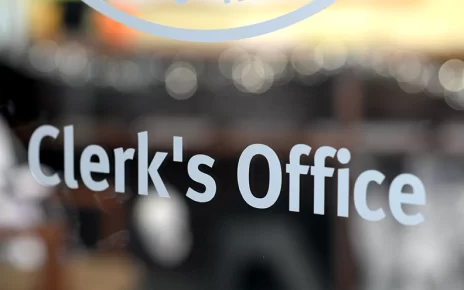January 12, 2024 | By Mark Scheer, mark.scheer@niagara-gazette.com | niagara-gazette.com
Photo above: Seneca Niagara Resort & Casino TODAY
The building officially opened to the public on Jan. 12, 1974 — a day known locally as “Super Saturday ‘74.”
Local radio personality Tom Darro, host of the WEBR AM 1440 talk show “Viewpoint,” said there was actually a lesser-known event a day earlier that served as an unofficial opening of sorts.
Darro recalled this week that he and a few others from the city, including former Councilman Tom Sotille and Link Lackey, who had a key to the building, snuck inside what was originally known as the Niagara Falls International Convention Center before it opened to have a little fun.
“We all went in and played a little round of basketball,” he said.
The next day, the 10,000-seat multi-purpose venue played host to its first official event, an officiated and recorded men’s basketball game featuring local rivals Canisius College and Niagara University.
A day later, on Jan. 13, 1974, the venue welcomed its first musical performer, the “Man in Black” himself, the legendary Johny Cash.


Other first-year entertainment included the Carpenters, Seals & Croft and the Miss U.S.A. Pageant.
In the years that followed, the building, renamed the Niagara Falls Convention and Civic Center, hosted some of the biggest celebrities in the country, including Elvis Presley (two shows in June 1974 and two shows in July 1975), Bob Dylan (a performance as part of his Rolling Thunder Revue Tour in November 1975), Frank Sinatra (a May 1990 concert) and David Bowie (a show that was part of his Sound+Vision Tour in July 1990).
The building was constructed as part of the federal Urban Renewal program. Designed by Johnson/Burgee Architects in collaboration with Jane Davis Doggett, architect Phillip Johnson said the building’s arched Fourth Street entranceway design was inspired by the rainbows commonly seen over Niagara Falls.
Following its opening, the structure served as the home of the Niagara Purple Eagles men’s basketball team from 1973 to 1982 and again from 1988 to 1996.
It also played host to the ABC Masters bowling tournament and 22 World Wrestling Federation events.
In March 1992, tragedy struck when a spectator was killed during a USHRA Monster Jam show at the venue. The driver of the truck Bad Medicine became incapacitated and veered his vehicle into the stands. An 82-year-old man named Lester Gilliam pushed a young boy out of the path of the vehicle and was struck and killed himself.
One of the final premiere events at the building came in July 2001 when local boxer Joe Mesi defeated Bert Cooper.
Amid sagging business and concerns about the cost to continue operating the facility, the city agreed to turn it over to the state who in turn transferred ownership to the Seneca Nation of Indians to allow for the opening of a Class III casino. In 2002, Seneca Niagara Casino was born.
Today, according to the Seneca Nation, the casino and its attached hotel pay nearly $220 million in wages to a total of 5,801 employees, including 3,892 people who work for the Seneca Gaming Corp. and another 1,971 who are employed by the Seneca Nation itself.
Seneca Nation leaders were hailed by many in the area for overseeing the redevelopment of the building as a casino in a matter of 100 days.
Seneca Nation President Rickey Armstrong Sr. described the building as the “embodiment of opportunity” that “presented both the promise of a better future and significant challenges that some thought were an impossible hill to climb.”
“Walking through the door at first and seeing what was there but knowing what we wanted to do was a mixture of hope and fear,” he said. “Everything that we have been able to do for our people and for the Western New York economy — every significant step we have taken in the last 21 years — was launched from what we were able to do from the moment we started our historic $100 million transformation.
“That building, in many ways, was our doorway to improving the lives of our people and becoming a force for economic growth in Western New York,” he added. “Our history changed, and we changed history, inside that building.”




